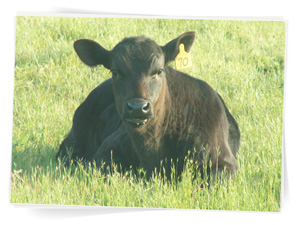
Benefits of 100% “Grass-fed” Beef
Grass-fed beef typically comes from cattle that eat only grass and other foraged foods throughout their lives. Often, conventional cattle eat, at some point, a diet that includes grains, such as corn. The difference in the diets of the cattle changes the nutrients and fats you get from eating the different types of beef. Grass-fed beef has some heart-health benefits that other types of beef don’t have. Studies have shown, when compared with other types of beef, grass-fed beef has:
- Less total fat and calories
- More heart-healthy omega-3 fatty acids
- More conjugated linoleic acid, a type of fat that’s thought to reduce heart disease and cancer risks
- More antioxidant vitamins, such as vitamin E, vitamin C, and beta-carotene
Organic, 100% grass-fed beef is rich in healthy nutrients and disease fighting properties. Studies have shown that grass-finished beef has almost 6 times more Omega-3 fatty acids than the grain finished beef and recommended level of Omega 6 to Omega 3 ratio of 3:1.
Omega-3’s properties to fight cancer and lower the risk of heart disease are well documented, but did you know that grass-feed beef is also high in beta-carotene (Vitamin A), another cancer fighting vitamin? The fat on our beef is a natural yellow-cream color due to this beta-carotene and conjugated linoleic acid (CLA), another antioxidant with anti-carcinogen properties found in high amounts only in beef that are grass-fed. More nutritional information on grass-fed beef can be found at Jo Robinson’s website: www.eatwild.com. Robinson is the New York Times bestselling author of “The Omega Diet” and “Why Grass-fed is Best”.
We raise our beef the old fashioned way, just like our great-grandparents before us.
We are closed herd, which means that all of our animals are born and raised on the farm, therefore significantly reducing the risk of disease. No antibiotics, hormones, animal by products or steroids are used. We are strictly a 100% grass fed herd (no grains). Our cattle spend their lives on lush, organic pastures where they have room to run and play. The cost is all inclusive (no additional cost for butchering, etc.). Harvests will be scheduled from July until October. If you are interested, please order early, so we can guarantee your purchase. The weight of the cattle may vary but a quarter of beef is typically approximately 150 pounds hanging weight. Customers can determine their own cut and wrap instructions but most people choose to get a mixture of steaks, roasts, hamburger, and stew meat.
For more information about grass fed beef, please visit:
- Eat Wild: Provides information about grass-fed food and a directory of local producers.
- Local Harvest: A directory of farmers’ markets, family farms and other sources of sustainably grown food in your area.
- The World’s Healthiest Foods: Provides information on grass fed beef and its benefits.


